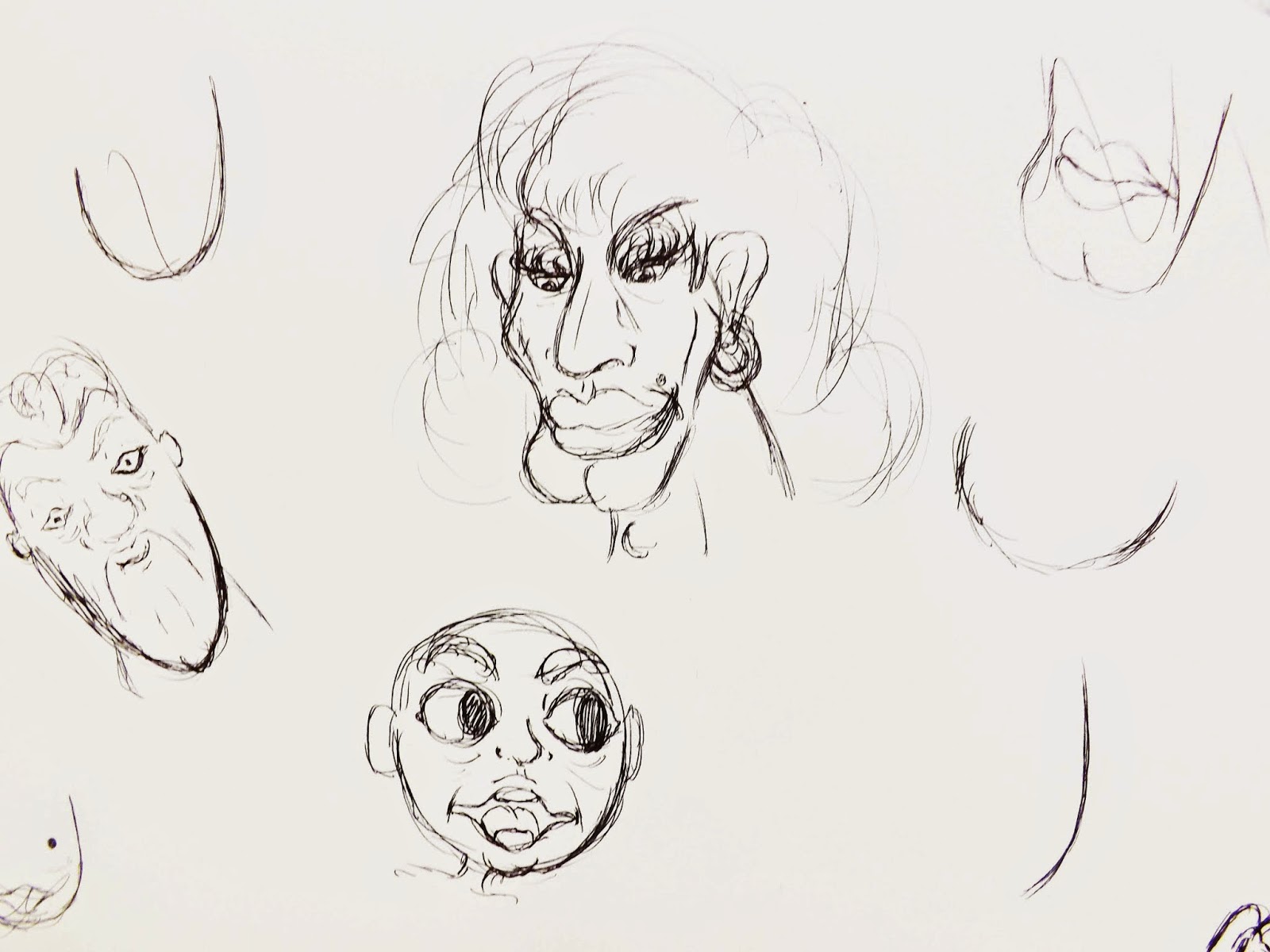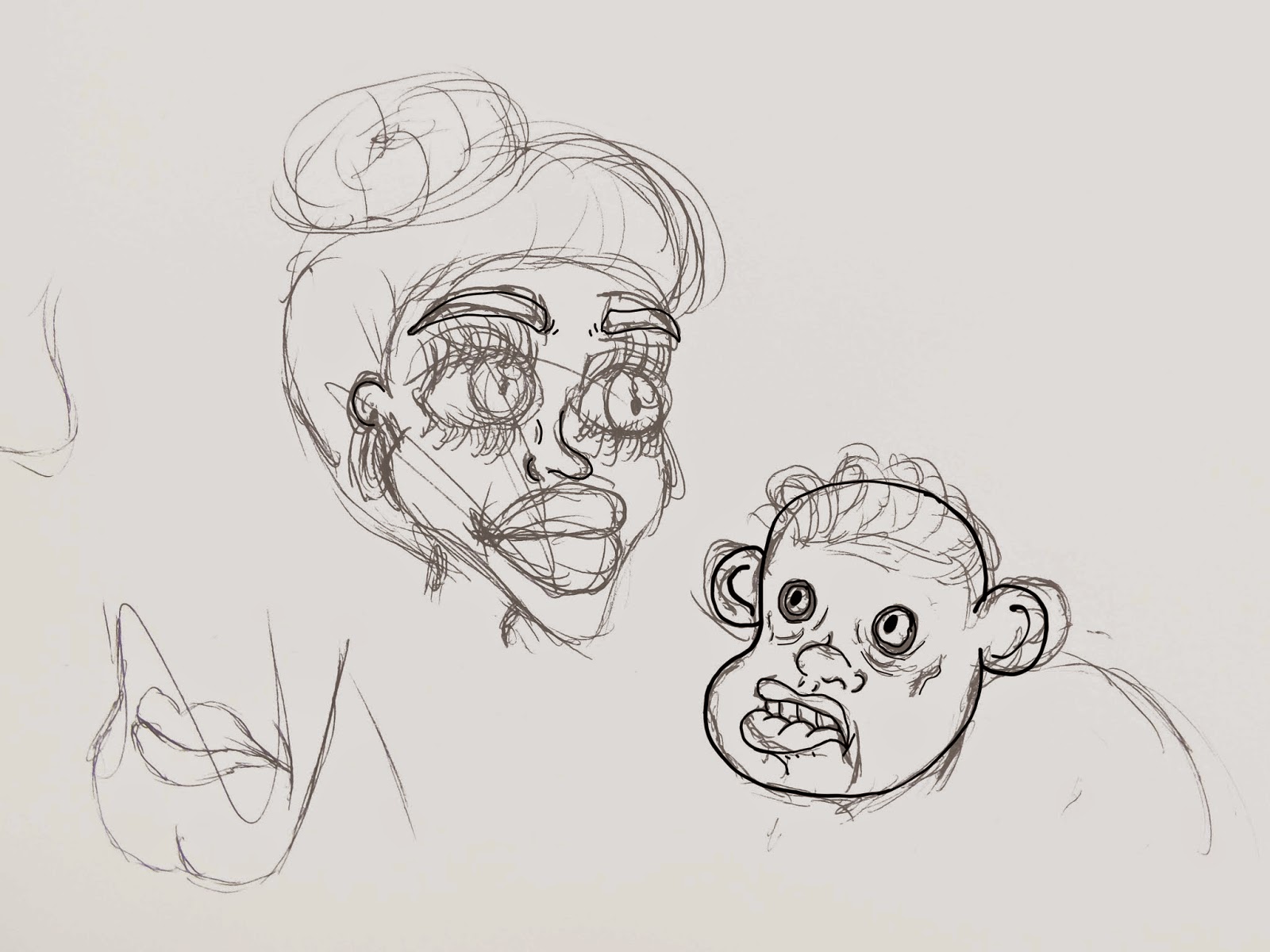Because reality is so visually complex, professional artists conceptually reduce objects to simple lines, shapes, and volumes, to simplify the task of rendering reality. This abstraction is something that is familiar to 3D digital artists working in such programs as Maya or 3ds Max, where each object -- whether it's a figure, an environment, or a prop -- will start its life as a primitive shape. Aside from the practical benefit of simplification, these shapes have been consistently associated with the following aesthetic concepts throughout art history:
- Circle: innocence, youth, energy, femininity
- Square: maturity, stability, balance, stubbornness
- Triangle: aggression, masculinity, force

Picture the above three wooden objects -- the sphere, cube, and star -- placed on a table. Now imagine shaking that table. The round sphere would begin rolling around -- demonstrating its dynamic properties -- while the cube would stay in place. Now imagine somebody throwing the sphere and star towards you for you to catch. You'd instinctively hesitate to catch the star, even if you knew it wouldn't harm you, based on your learned response to sharp objects, in contrast to soft and round shapes.
Note that a curved line can be represented as a circular shape, or spherical volume; a straight upright or horizontal line, as a square, or cube; and an angular line as a triangle, or pyramid. [For convenience, I will refer to each group by its shape].

The dynamic curves of Disney's logo, which references the circle, are echoed in the curved pattern of a beachside promenade -- encouraging us to visually and physically experience the objects in a dynamic way.
The upright lines of the square give us a sense of stability in the form of pillars fronting the National Gallery in London; and echoed in the straight lines of the Range Rover, designed to elicit feelings of safety, and sophistication.
While the edgy triangle is embedded in the logo of thrash metal band, Anthrax; as well as Frederic C. Hamilton building in Denver, USA; and the aggressively sporty lines of the Lamborghini.

Lines, Shapes, and Composition in Traditional Art
Classical composition is an important application for primary shapes, employed by the Old Masters to influence the aesthetic qualities of an artwork. What is classical composition, and why is it such an important artistic tool?
Classical artists would compose their paintings upon a system of lines that were designed to guide the viewer's eye around the image. These line-based compositions helped to organize elements in a painting -- making the image easier to read. But, as we know, primary lines and shapes also have an aesthetic value, which relates to a composition's second purpose.
 |
| Diana and Her Companions (c. 1655), Johannes Vermeer |
 |
| Massacre of the Innocents (c. 1611-1612), Peter Paul Rubens |
Character Shapes and Character Development
Now we will look at how these shapes can help us make sense of various character designs in the context of dynamic composition. The characters in Nintendo's Mario games make for great examples for this application.
 | ||
| Nintendo characters from left to right: Mario, Luigi, Wario, Bowser, and a Goomba |
How would you describe Mario's personality? Perhaps: dynamic, youthful, positive. It's therefore no surprise to find that everything about Mario's design is based on the circular concept -- from his spherical torso, to his round moustache.
Luigi's supportive, brotherly personality can also be evidenced in the verticality of his figure, which references the rectangle in contrast to Mario's round shape. While Wario -- and almost every enemy within the Mario universe -- is aligned to the aggressive triangle.
In actual fact, what we're looking at is the same character! The artists at Nintendo have simply taken Mario's body and dialled the forms to be softer or sharper for different aesthetic effects based on the circle (Mario), square (Luigi), and triangle (Wario).
Character Shape Versus Environment Shape
A character's surroundings are a key part of dynamic composition because the environment normally takes up much of the visual frame. (Please note that environment here also includes secondary characters and enemies.) We can respond emotionally to characters based on their shape and animation alone, however it's only once we see characters in an environment that a narrative emerges.

The illustrations above represent a character (purple) in an environment (green). A circular character in a circular environment (top-left) exhibits a sense of harmony because the character's shape is echoed in its surroundings. The echo gives us a sense of home, suggesting that here is where the character belongs. We also get a sense of harmony if both the character and environment are square, or triangular (lower-right), although the change of primary shape gives us a different aesthetic sensation.
We get a sense of dissonance when character and environment shapes contrast each other. A circular character appears threatened when placed in an edgy environment (top-right); while a triangular character appears the threat in a soft and rounded environment (lower-left).
 |
| Lord of the Rings Trilogy (2001-2003), directed by Peter Jackson, New Line Cinema |
This contrast of primary shapes allows us to reduce the story of Lord of the Rings to an abstract visual narrative using basic shapes, which sees the round Frodo and Samwise leave their round home to journey to a threatening, angular landscape, before returning to the safety of home.
 |
| Super Mario Galaxy (2007), Nintendo |
 |
| Journey (2012), thatgamecompany |









































